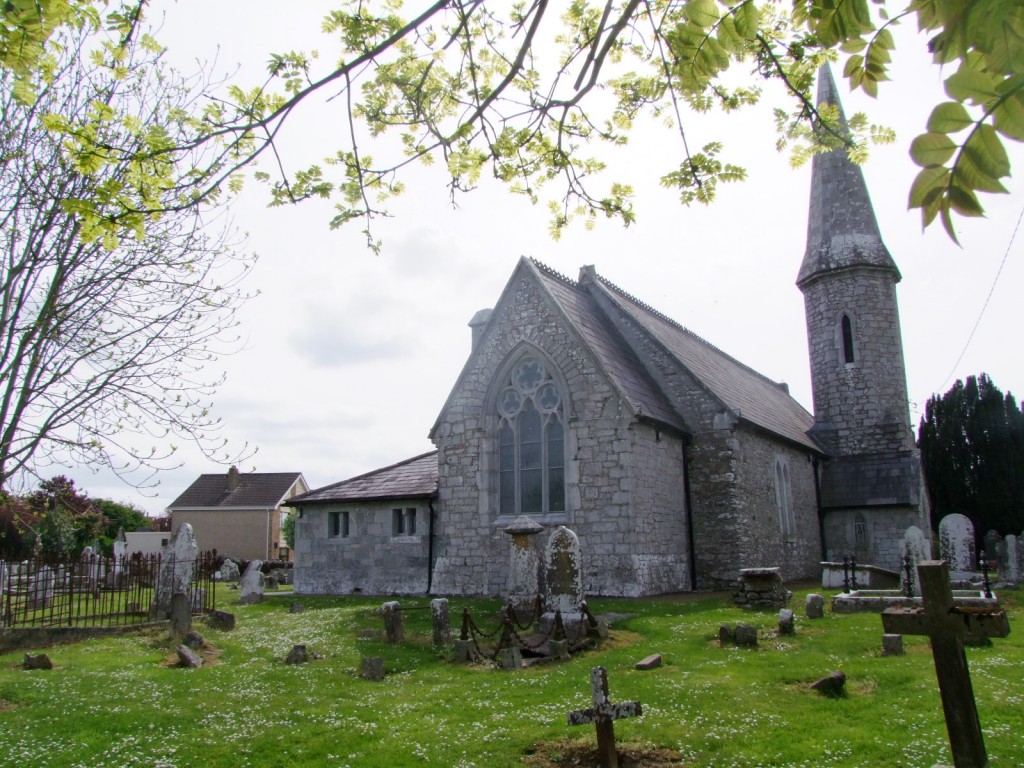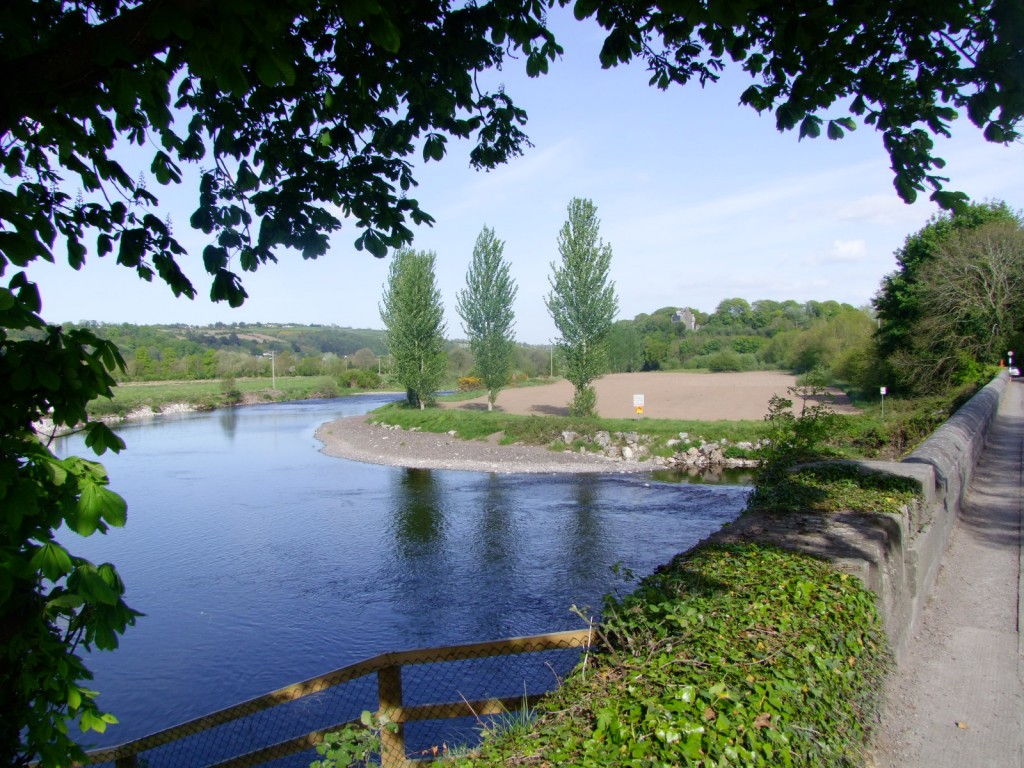
Kieran’s Our City, Our Town article, Cork Independent
In the Footsteps of St. Finbarre (Part 213)
Humanising History
The late nineteenth century structure of St. Peter’s Church Carrigrohane sits atop Church Road Hill in Carrigrohane and within a quietness overlooking in particular the western fringes of Bishopstown, Cork City. For me I delight in walking across such spaces. There is also a kind of magical feel about such places.
In St Peter’s Church graveyard, the rusted Victorian chains around some graves reveal the forgotten traditions of minding the dead in Victorian times. Similarly, the multiple headstones now lean to one and have lost their foothold in the landscape and maybe in memory too as the names and dates fade on the stone. It’s seems easy to romanticise such a place but as I sit on the grass in the graveyard snapping pictures I do think of all the people buried here and the various centuries represented and perhaps some events they might have seen in their lives and all those people who make a regular pilgrimage to them.
Brady in his 1863 book on the churches of County Cork reveal a deeper legacy than the nineteenth century building. In fact, there have been people walking across this space for over 700 years. A parish church is mentioned in Carrigrohane in the year 1291 and is rated at four marks. It probably complimented the nearby De Cogan Castle at Carrigrohane. The De Cogans were of Anglo-Normans descent and had been involved in constructing the walled town of Cork and possessed much land in the Cork area.
Through reading up more on the idea of a sacred place and why people engage with churches and religion, I was interested to read up on a number of points. These books brought me to pilgrimage practices in Ireland, Italy, and Japan. There is an argument by pilgrimage scholars that at churches that a sense of place is forged on the edge of the real and heavenly world, the known and invisible world – that the divine presence was real and accessible –that that the divine could be seen and touched. In addition to become conscious of the sacred and the powerful sense of mystery people carry and display a whole series of personal emotions. The human experience conjures up multiple feelings-of belief, faith, hope, expectation, motivation, intellectual inspiration and inquisitiveness, all in a search for forgiveness and an epiphany. I think these are very relevant points and perhaps humanise the experience of the heritage of religion as well. That is not just the facts, structure, artefacts, oral histories that need minding but also the traits that perhaps bind the human condition together.
Sometimes, I also forget about the human side of minding and making churches relevant to people in today’s world- the level that someone had to take over the building, and make the building meaningful to a community and be a leader.
Very little is known of the leaders in the first three hundred years of the history of St. Peter’s Church. It is only in the turbulent years of King Henry VIII when one gets further information through the survey work he pursued of churches in Britain and Ireland. In 1543, William Fitzmaurice Fitzgerald, Chaplain, was appointed precentor by the crown. The position was vacant and at the King’s disposal. The previous incumbent is noted as of Irish descent.A precentor is a person who helps facilitate worship.
By the year 1582, John Gould was precentor in Carrigrohane. In the year 1591, Dionisius Cambell appears as Precentor. Cambell was from Scotland and had been Archdeacon and subsequently Dean of Limerick. He was rector in Dromclifee in Killaloe and in the year 1588 was appointed coadjutor Bishop of Limerick. In 1591, he came to Carrigrohane. In the year 1603 he was nominated to the sees of Derry, Raphoe and Clogher. Unfortunately he died before his consecration in London in 1603. By 1612 John Alden is in place as precentor in Carrigrohane. He eventually moved on to Clonmel and Israel Taylor took over. In 1615, a curate Richard Allen was also provided for. A this time also, the chancel of the church was in ruins and had to be replaced. The structure held about 70 people.
In 1641, Israel Taylor’s property at Carrigrohane amounting to £680 was taken from him due to the mounting political situation in Ireland and protests from the Protestant class about their rights within Ireland. In post Cromwellian times in 1661, Philemon Fitzsymons appears at Precentor. He was educated at Trinity College Dublin and worked in Cloyne, Youghal and Inniscarra before taking up his position at Carrigrohane. Three years later he died. His successor was Richard Clerke who graduated from TCD in 1664 and held positions in Cloyne and Lismore before taking over responsibility.
When one fast forwards through time, new names appear as precentors – Walter Neale (1686), Rowland Davies (1706), Peter Hewet (1710), Thomas Russell (1720), Jemmet Browne (1724), Peter Waterhouse (1732) and Edward Browne (1750), John Chetwynd (1752), Thomas Browne (1757), Thomas Waterhouse (1762), Samuel Woodroffe (1762), John Chetwood (1780), Henry Sandiford (1790). In addition, Charles Smith in his History of Cork in the year 1750 writes about a new church built on the ruins of the old one in the early eighteenth century.
To be continued…
Captions:
541a. St. Peter’s Church Carrigrohane, May 2010 (pictures: Kieran McCarthy)
541b. River Lee at Leemount Bridge, May 2010
